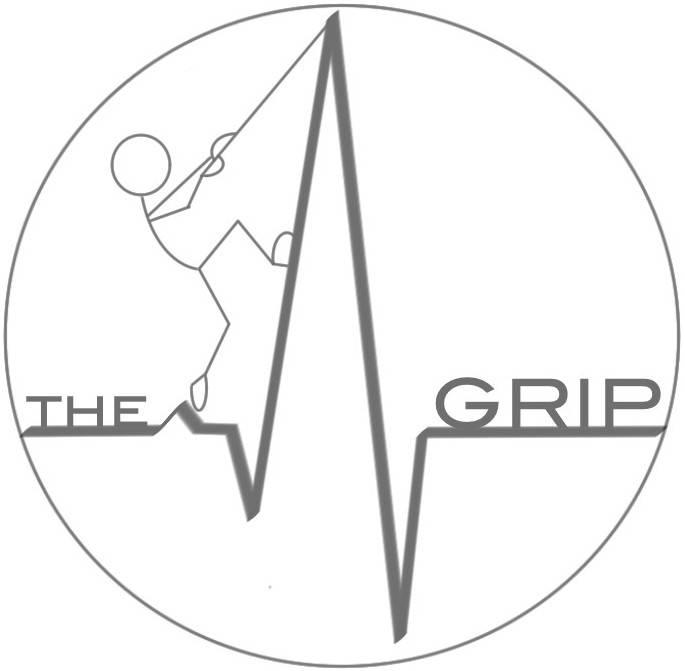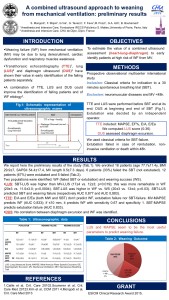Authors Mayo PH, Copetti R, Feller-Kopman D, Mathis G, Maury E, Mongodi S, Mojoli F, Volpicelli G, Zanobetti M. Intensive Care Med. 2019 Aug 15. doi: 10.1007/s00134-019-05725-8. [Epub ahead of print] Abstract This narrative review focuses on thoracic ultrasonography (lung and pleural) with the aim of outlining its utility for the critical care clinician. The […]

Mongodi, Silvia MSc, MD, PhD; Bonaiti, Silvia MD; Stella, Andrea MD; Colombo, Andrea MD; Santangelo, Erminio MD‡; Vaschetto, Rosanna MSc, MD, PhD; Orlando, Anita MD, PhD; Bouhemad, Bélaïd MD, PhD; Mojoli, Francesco MD Clinical Pulmonary Medicine: May 2019 – Volume 26 – Issue 3 – p 92–97 doi: 10.1097/CPM.0000000000000311 Abstract: Lung ultrasound has […]
Mongodi S, Stella A, Orlando A, Mojoli F. Anesthesiology. 2019 Jan 17. doi: 10.1097/ALN.0000000000002522. From Pubmed Share this:
Bélaïd Bouhemad, Ophélie Dransart-Rayé, Francesco Mojoli, Silvia Mongodi Ann Transl Med 2018;6(21):418 Abstract: Ventilator-associated pneumonia (VAP) is the most frequent nosocomial infection in intensive care units (ICU) and is associated with increased mortality, use of antimicrobials, longer mechanical ventilation, and higher healthcare costs. Lung ultrasonography (LUS) can be used at the bedside and […]
Mojoli F, Bouhemad B, Mongodi S, Lichtenstein D. Am J Respir Crit Care Med. 2018 Oct 29. doi: 10.1164/rccm.201802-0236CI. Abstract Point-of-care ultrasound is increasingly used at the bedside to integrate the clinical assessment of the critically ill; in particular, lungultrasound greatly developed in the last decade. This review describes basic lung ultrasound signs and focuses on their applications in critical […]
Chiumello D, Mongodi S, Algieri I, Vergani GL, Orlando A, Via G, Crimella F, Cressoni M, Mojoli F. Crit Care Med. 2018 Jul 25. doi: 10.1097/CCM.0000000000003340 Abstract OBJECTIVES: Lung ultrasound is commonly used to evaluate lung morphology in patients with acute respiratory distress syndrome. Aim of this study was to determine lung ultrasound reliability in […]
Silvia Mongodi, Marco Pozzi, Anita Orlando, Bélaid Bouhemad, Andrea Stella, Guido Tavazzi, Gabriele Via, Giorgio Antonio Iotti and Francesco Mojoli Intensive Care Med. 2017 Sep 22. doi: 10.1007/s00134-017-4941-7. Free full text here Share this:
F. Mojoli, S. Mongodi ICU Management & Practice. 2017;17(3):186-9. In the last years, ultrasound (US) became an essential tool in the hands of the intensivist and is now recommended both for procedural guidance and diagnostic purposes. Point-of-care ultrasound (POCUS) is an immediately available and repeatable, non-irradiating bedside tool integrating the clinical examination. While echocardiography […]
Price S, Platz E, Cullen L, Tavazzi G, Christ M, Cowie MR, Maisel AS, Masip J, Miro, McMurray JJ, Peacock WF, Martin-Sanchez FJ, Somma SD, Bueno H, Zeymer U, Mueller C; Acute Heart Failure Study Group of the European Society of Cardiology Acute Cardiovascular Care Association. Abstract Echocardiography is increasingly recommended for the diagnosis and […]
S. Mongodi, F. Mojoli, G. Via, G. Tavazzi, F. Fava, M. Pozzi, G. A. Iotti, B. Bouhemad
Introduction: Weaning failure (WF) from mechanical ventilation (MV) may be due to lung derecruitment, cardiac dysfunction and respiratory muscles weakness. Transthoracic echocardiography (TTE) [1], lung ultrasound (LUS) [2] and diaphragm ultrasound (DUS) [3] have shown their value in early identification of the failing patients separately. A combination of TTE, LUS and DUS could improve the identification of failing patients and of WF etiology [4]. We aimed to estimate the value of a combined ultrasound assessment (heart-lung-diaphragm) to early identify patients at high risk of WF from MV.
Methods: Prospective observational multicenter international study including all patients undergoing a 30’ spontaneous breathing trial (SBT) before extubation. Patients with neuromuscular diseases and MV <48 hours were excluded. TTE and LUS were performed before SBT and at its end; DUS at beginning and end of SBT. TTE included: MAPSE (mitral annulus plane systolic excursion), EF% (ejection fraction), E/A, E/Ea. We computed LUS score (0–36) [2]. DUS assessed diaphragm excursion. Extubation was considered as failed in case of reintubation, non-invasive ventilation or death within 48 hours. We used classical criteria for SBT failure. Extubation was decided by an independent operator.
Results: We enrolled 18 patients (age 77.7 ± 11.4 yrs, BMI 29.9 ± 7, SAPSII 54.4 ± 17.4, MV length 9.5 ± 7.3 days). 6 patients (33%) failed the SBT and were not extubated. 12 patients (67%) were extubated; 5 failed. Two populations were identified: WF (failed SBT or extubation) and weaning success (WS). LUS: SBT-LUS was higher than MVLUS in the whole population (17 ± 4 vs. 12 ± 3; p = 0.019); this was more remarkable in WF (20 ± 3 vs. 11 ± 3; p = 0.0004). SBT-LUS was higher in WF vs. WS (20 ± 3 vs. 13 ± 4; p = 0.03). SBT-LUS predicted SBT and weaning failure (respectively AUC 0,877 and AUC 0,883). TTE: E/A and E/Ea (both MW and SBT) did not predict WF, extubation failure nor SBT-failure. MV-MAPSE predicted WF (AUC 0,833); if < =10 mm it predicted WF with sensitivity 0.67 and specificity 1. SBTMAPSE predicted extubation failure (AUC 0.833). DUS: No correlation between diaphragm excursion and WF was identified.
Conclusions: LUS and MAPSE seem to be the most useful parameters to predict weaning failure.
References 1. Caille et al., Crit Care 2010 2. Soummer et al., Crit Care Med 2012 3. Kim et al., CCM 2011 4. Mongodi et al., Crit Care Med 2013
Grant The research project received the ESICM Clinical Research Award 2015.
Pag. 30 From Critical Care
